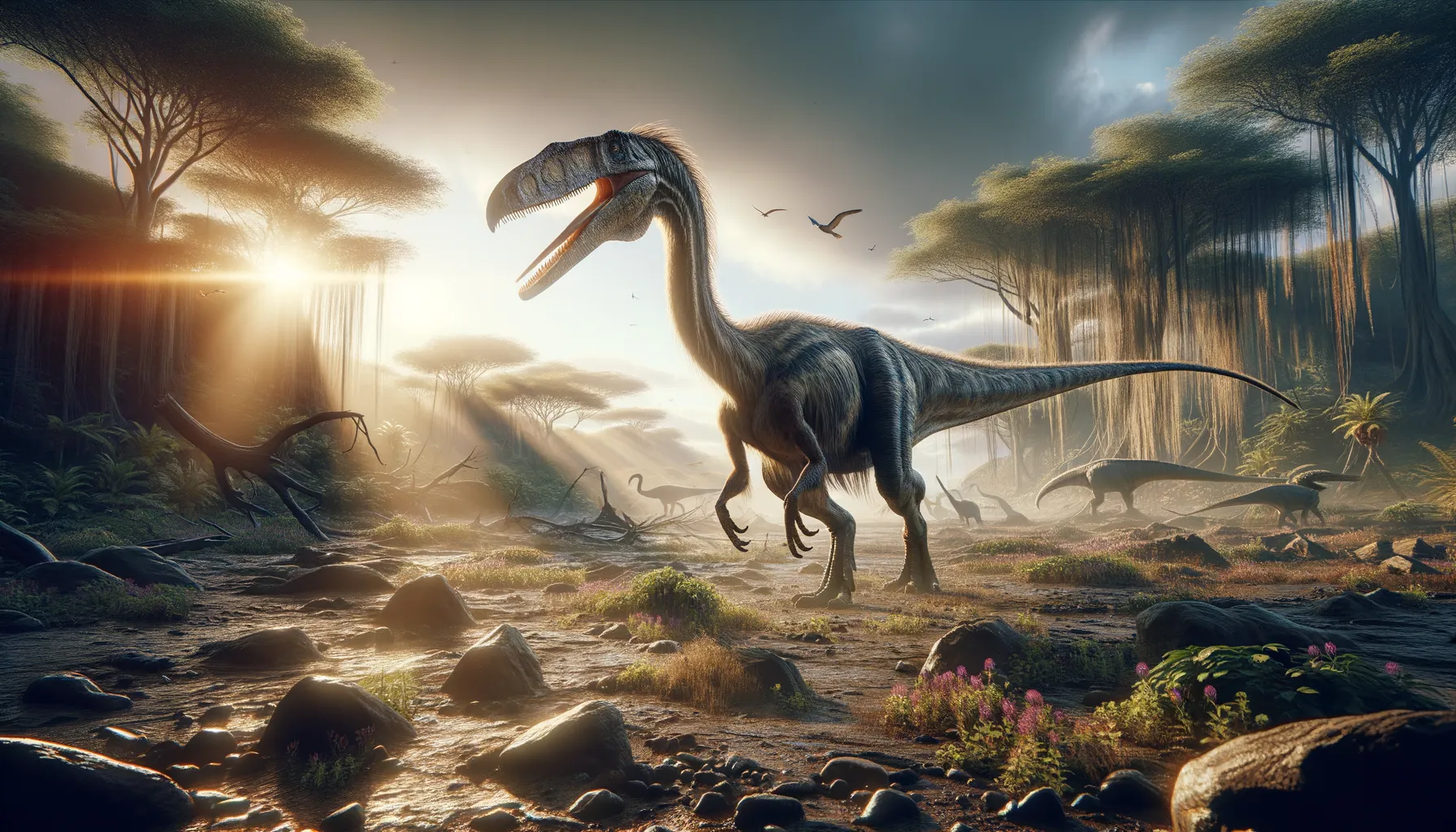
Pelecanimimus
Tiny but mighty, with a beak full of teeth!
Period
Cretaceous
Length
About 2 meters (6.5 feet) long.
Height
Roughly 1.2 meters (4 feet).
Weight
Approximately 50 kilograms (110 pounds).
Pelecanimimus was a theropod dinosaur that lived during the Early Cretaceous period. Noted for its numerous teeth, this dinosaur likely had a diet that included both small animals and plants. Its name means 'pelican mimic,' referencing its long neck and the suggestion that it might have had a throat pouch similar to modern pelicans.
Diet
Pelecanimimus had a diverse diet, possibly consisting of small vertebrates, insects, and plants. Its numerous teeth suggest it was an omnivore, capable of eating a wide range of food items.
Hunting
With its quick movements and long neck, it could efficiently catch small prey. It might have used a combination of pecking and snatching to secure food.
Environmental challenges
Pelecanimimus faced the challenge of finding food in a varied Cretaceous landscape. Seasonal changes could have affected food availability, requiring adaptability. It also needed to avoid predators larger than itself while foraging.
Speed
Moderate, capable of quick bursts.
Lifespan
Estimated to be around 10-20 years.
First discovery
First discovered in Spain in 1994.
Fun Facts
- Pelecanimimus was a dinosaur that lived around 130 million years ago during the Early Cretaceous period.
- It was discovered in Spain and is known for having a large number of teeth, more than 200, which is unusual for its dinosaur group.
- Pelecanimimus had a long, narrow skull that resembled a pelican's bill, which is where its name comes from.
- Unlike many other dinosaurs, Pelecanimimus likely had a covering similar to feathers or hair, providing clues to the evolution of feathers in dinosaurs.
- It belonged to the ornithomimosaur family, often called 'ostrich dinosaurs', due to their resemblance to modern ostriches.
- Pelecanimimus was relatively small compared to most dinosaurs, estimated to be about 2 meters (6.5 feet) long.
- With its many teeth, Pelecanimimus was likely omnivorous, feeding on both plants and small animals.
Growth and Development
Like many theropods, Pelecanimimus likely experienced rapid growth in its early life to reach maturity quickly. Growth rates could have varied based on environmental conditions and food supply.
Habitat
Pelecanimimus lived in what is now modern Spain, with dense vegetation and water sources nearby. It inhabited areas that provided a mix of open spaces and vegetation to support its omnivorous diet.
Interaction with other species
It likely interacted with a variety of species, both prey and potential predators. Pelecanimimus had to navigate a complex ecosystem and maintain vigilance against larger carnivores.
Natural lifespan
Its natural lifespan is estimated to be around 10-20 years.
Reproduction
Pelecanimimus was oviparous, laying eggs from which hatchlings emerged. Little is known about parental care, but it's possible that hatchlings were relatively independent soon after birth.
Social behaviour
While specific social behaviors are unknown, it may have lived in groups, at least during certain life stages, for protection and social interaction.
Fossil locations
Fossils of Pelecanimimus have primarily been found in Spain. These findings provide valuable insights into Cretaceous ecosystems and this unique dinosaur's role.
